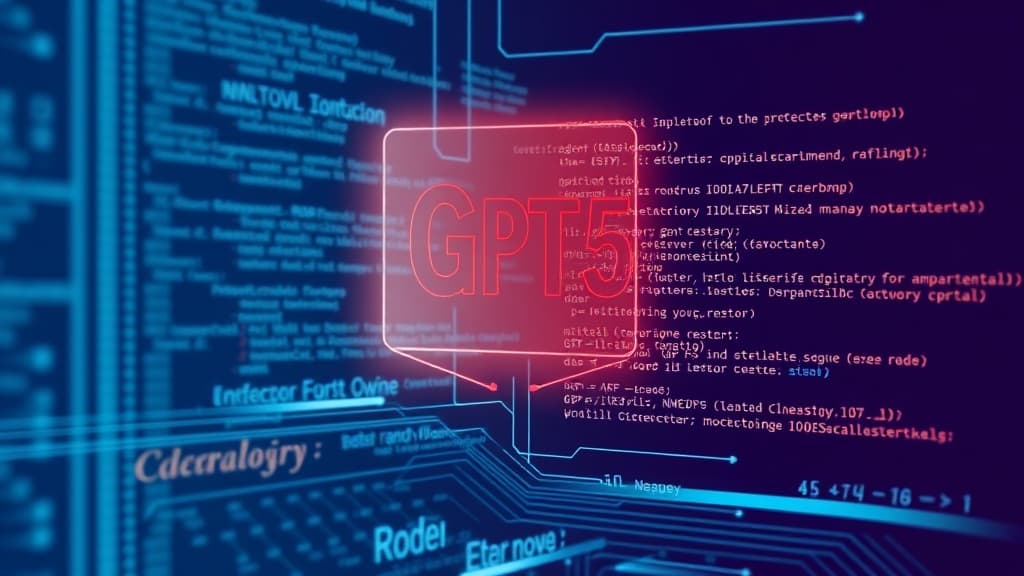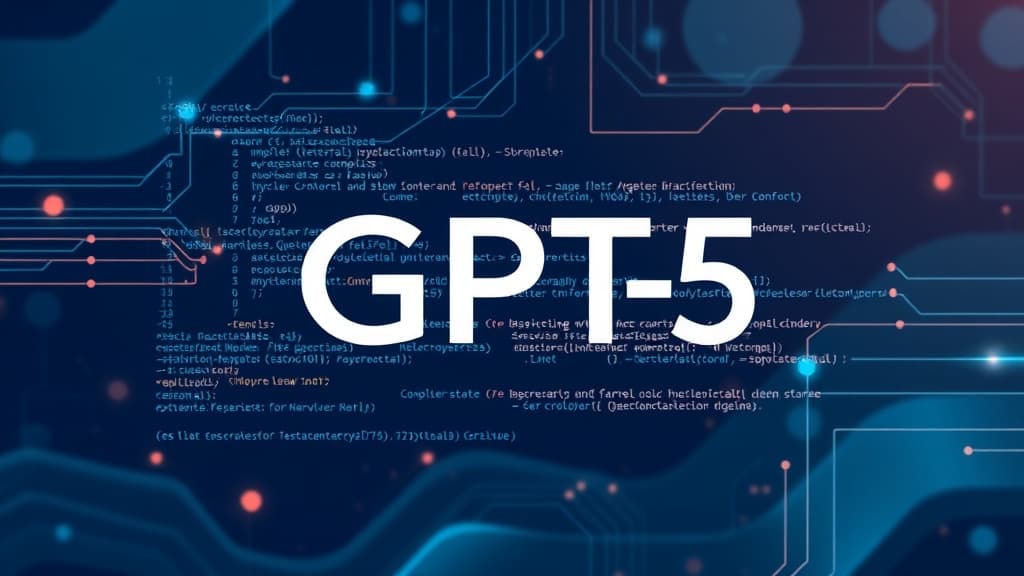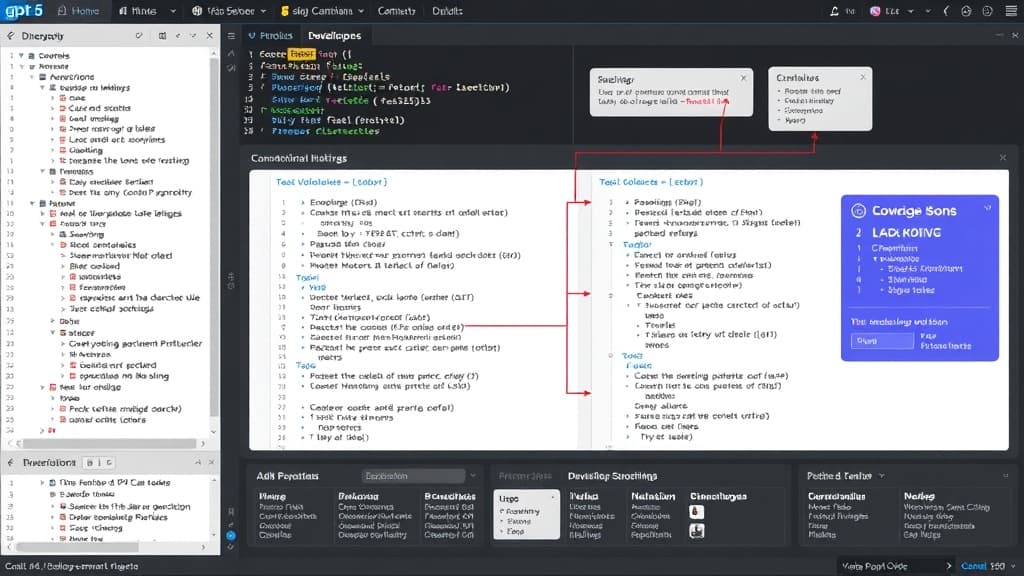GPT-5: Advanced Code Synthesis and Debugging

GPT-5: Your New Best Friend for Code Synthesis and Debugging
Hey there, fellow developers! Have you ever found yourself stuck on a coding problem, or maybe you’re just looking for a way to speed up your development process? I know I have. That’s where GPT-5 comes into play. Since its release, it's proven to be a real game changer for coding, and I’m excited to share all the details about its capabilities, recent updates, and how you can start using it in your projects.
What’s New with GPT-5?
As of October 2025, we’re rocking GPT-5.2, and honestly, it's pretty darn impressive. The enhancements in this version focus on code generation and debugging—two areas that can seriously drain our time if we’re not careful. This model builds on the transformer architecture, but with some nifty tweaks in the attention mechanisms. So, it’s not just about generating code; it’s about understanding the context in which that code will live.
Contextual Understanding: The Heart of GPT-5
One of the standout features of GPT-5 is its ability to maintain context over longer conversations. Have you ever tried getting help from a code assistant that just doesn’t remember what you were talking about? Frustrating, right? Well, with GPT-5, you can dive deep into a problem, and it’ll churn out code snippets that not only look right but make sense for your specific task. Whether you’re working with complex algorithms or intricate data structures, this model has your back.
Multi-Language Magic
Another thing I really appreciate about GPT-5 is its versatility—it supports a whole bunch of programming languages, including Python, JavaScript, Java, C#, Go, and Rust. So, no matter what stack you’re working with, you can count on GPT-5 to lend a hand. It’s like having a team of experts at your disposal. Whether you’re prototyping a new feature in JavaScript or refining an algorithm in Python, this model can provide relevant snippets to get you started.
Debugging Like a Pro
Alright, let’s talk about one of the most tedious parts of coding: debugging. We’ve all been there, staring at lines of code, trying to figure out why something isn’t working. GPT-5 is designed to ease that pain by analyzing your existing codebases and identifying bugs. It goes a step further by suggesting fixes and explaining why certain changes might work. This isn’t just about throwing out random lines of code; it’s about empowering you with knowledge.
Real-World Demo: Debugging Example
Let’s take a look at a simple sorting function and see how GPT-5 can help:
Original Code:
def bubble_sort(arr):
"""Sort an array using bubble sort."""
n = len(arr)
for i in range(n):
for j in range(n - i - 1):
if arr[j] > arr[j + 1]:
arr[j], arr[j + 1] = arr[j + 1], arr[j]
return arr
# Example Usage
print(bubble_sort([64, 34, 25, 12, 22, 11, 90])) # Outputs a sorted list
Identified Bug: This function doesn’t handle empty arrays well.
Suggested Fix:
def bubble_sort(arr):
"""Sort an array using bubble sort."""
if not arr:
return arr # Handle empty list
n = len(arr)
for i in range(n):
for j in range(n - i - 1):
if arr[j] > arr[j + 1]:
arr[j], arr[j + 1] = arr[j + 1], arr[j]
return arr
How awesome is that? A quick suggestion to handle an edge case, and you’re all set!
IDE Integration: Coding Just Got Easier
What’s really cool about GPT-5 is its integration into popular IDEs like Visual Studio Code and JetBrains products. Imagine you’re coding away, and you get real-time suggestions and error detection as you type. It’s like having a buddy who’s an expert coder looking over your shoulder, nudging you in the right direction. This not only improves productivity but also helps you catch mistakes before they become bigger headaches.
The Feedback Loop: Learning From You
Another significant update with GPT-5.2 is the feedback loop. You can now provide feedback on the code it generates, and it learns from those interactions. This means that over time, it gets better at understanding your style and preferences. I’ve found that this makes the interaction feel much more natural and tailored, almost like it's becoming a coding partner who knows your quirks.
Real-World Applications
Alright, let’s get down to brass tacks. How are people actually using GPT-5 in the wild? Here are a few real-world scenarios:
-
Software Development: Companies use GPT-5 to automate repetitive tasks. This lets developers focus on solving more complex problems.
-
Education: Coding bootcamps are leveraging the model to provide immediate feedback to learners. Imagine getting insights while you’re still grasping the basics!
-
Open Source Contributions: Developers are utilizing GPT-5 to help write documentation and contribute code to open-source projects, making it easier to collaborate and innovate.
-
Enterprise Solutions: Businesses are integrating GPT-5 for rapid prototyping, which can drastically reduce their time to market.
Wrapping It Up
So, what’s the takeaway here? As of October 2025, GPT-5 is a powerful tool that’s fundamentally changing how we code. It offers advanced code synthesis and debugging capabilities that can streamline our workflows and make programming a little less daunting. Whether you’re a seasoned developer or just starting, this model can help you tackle coding challenges with confidence.
In my experience, the combination of contextual understanding, multi-language support, and real-time IDE integration makes GPT-5 an invaluable companion in the coding world. If you haven’t experimented with it yet, I highly recommend diving in. You might just find that it becomes your new best friend in programming. Happy coding!

